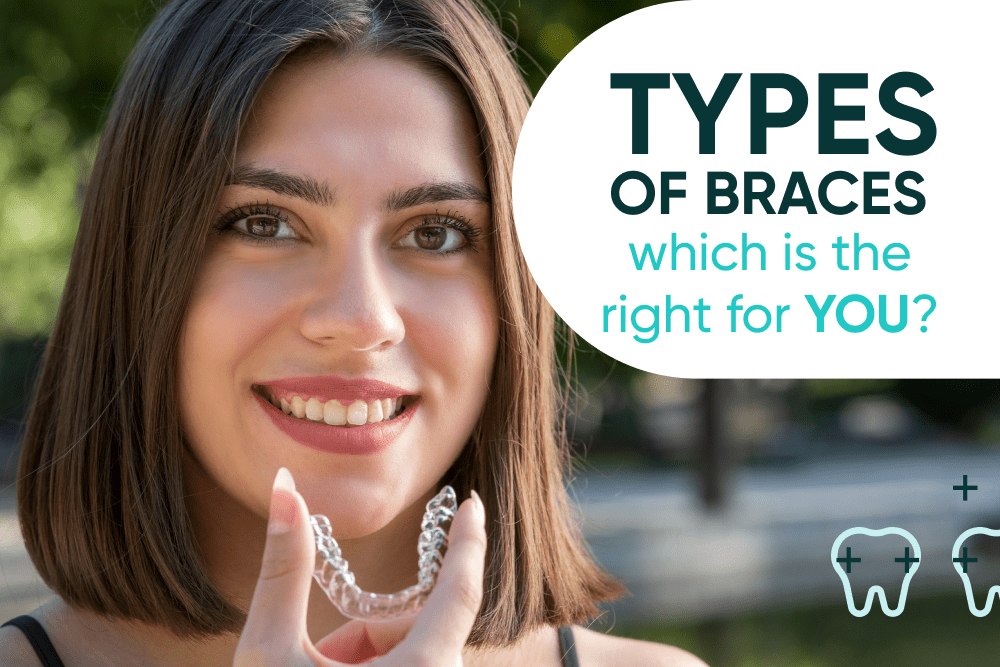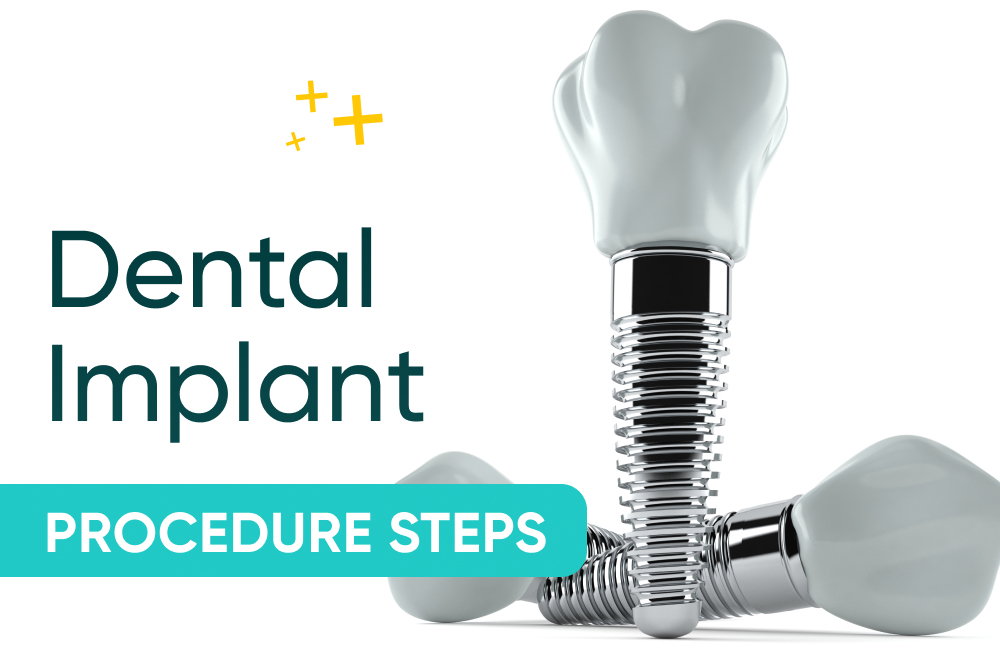Teeth braces are becoming increasingly popular. But with so many types of braces available, it can be difficult to decide which is the right one.
From traditional metal braces to invisible aligners, each type has advantages and disadvantages that you must understand.
In this article, we’ll take a look at the different braces available and provide an overview of what they offer. As such, we hope it helps you choose whether traditional braces or Invisalign is the best for you.
Understanding braces for teeth
Orthodontic braces are remarkable dental devices designed to correct various dental issues and create beautiful smiles.
These ingenious appliances have a rich history. They span several decades of helping people achieve improved dental alignment and enhanced self-confidence.
What are braces? By definition, braces align and straighten teeth. As such, they ensure that the teeth fit harmoniously within the mouth.
They are particularly effective in correcting the following:
- Dental misalignments
- Crooked teeth
- Overcrowding
- Gaps
- Bite issues such as overbites and underbites
The science behind braces revolves around the principle of controlled pressure. Braces gently exert pressure on the teeth. As a result, they shift gradually over time.
This consistent pressure stimulates bone remodeling. In simpler terms, this is when bone tissue reforms and adapts to the new position of the teeth.
Exploring traditional braces
Traditional braces or metal braces remain the most recognizable and time-tested option. They’ve been a staple in orthodontic treatment and continue to be a reliable choice for correcting dental issues.
1. What do braces do?
Several key components work in harmony to achieve dental alignment for traditional braces.
At the core of this wired braces system are small, sturdy metal brackets. Dentists carefully bond these brackets to the front surface of each tooth using a dental adhesive.
As such, the brackets act as anchoring points for the wires. Consequently, they deliver the essential pressure needed to guide the teeth into their proper positions.
Connected to the brackets are thin, flexible wires made of high-quality metal alloys, such as stainless steel. These archwires play a pivotal role in the braces’ functionality.
They run through the brackets and apply consistent pressure to the teeth. As a result, they gently urge the teeth to move in the desired direction.
Over time, this pressure encourages the teeth to shift into more aligned positions. Accordingly, they correct issues like crowding, spacing, and misalignments.
2. What you need to know about traditional braces
Metal braces are highly customizable. As such, you can get star braces, which can make the experience more fun for children.
Traditional braces also entail regular visits to the dentist. This way, your doctor can ensure optimal pressure for the best results.
During these visits, your dentist replaces or adjusts the wires. They may also change the small rubber bands, known as ligatures or o-rings.
These adjustments are vital in maintaining the appropriate force needed to move the teeth effectively.
Additionally, traditional braces are known for their affordability, with costs ranging between $3,000 and $7,000.
Knowing different types of braces and cost
Let’s explore other types of braces for teeth that cater to different needs and aesthetic preferences:
1. Bracket braces: Discreet and stylish
Bracket braces or ceramic braces offer a more subtle and stylish alternative to traditional metal braces.
These braces function similarly to metal braces with one key difference. Bracket braces use clear or tooth-colored ceramic materials.
This design choice makes them blend in more naturally with the teeth. As a result, they’re less noticeable during treatment.
These are highly effective in correcting a wide range of dental issues. Plus, they’re particularly popular among adult patients and individuals who prefer a more discreet braces option.
However, they may be slightly larger and more brittle than metal brackets. Nonetheless, newer variations are more durable and less prone to staining. As such, you can ensure a positive braces experience.
In terms of cost, bracket braces will typically cost you around $4,000 to $8,000.
2. Lingual braces: The hidden beauty
Lingual braces represent a revolutionary approach to orthodontic treatment, as they are entirely hidden from view.
Unlike traditional and bracket braces, dentists place these braces on the back of teeth, or the lingual surface of the teeth. As such, they’re virtually invisible when you smile.
These braces are custom-made to fit the contours of each patient’s teeth. Thus, they ensure maximum comfort and efficiency in the teeth-straightening process.
They work similarly to traditional braces, using wires and brackets. However, their placement on the back of the teeth ensures they remain completely concealed from others.
Lingual braces are ideal for those who prioritize aesthetics but still want to achieve a beautifully aligned smile. Take note, though, that you may need time to adjust to these braces.
This is because they can initially affect speech and tongue movement. However, with practice, most patients adjust quickly and appreciate the discrete nature of these braces.
Plus, these braces are the most expensive in the bunch, costing between $8,000 and $10,000.
3. Clear aligners: The invisible braces
Clear aligners, such as Invisalign, became popular recently due to their virtually invisible appearance and convenience.
Unlike traditional braces, clear aligners are not fixed to the teeth. Instead, they have removable, transparent trays custom-made to fit over the teeth snugly.
The treatment process with clear aligners involves wearing a series of different aligners. Each of these gradually shifts the teeth into their desired positions.
Typically, you need to change aligners every one to two weeks. Moreover, the treatment duration varies depending on the complexity of the case.
Clear aligners offer numerous advantages, including the ability to remove them for eating, brushing, and flossing. As such, it allows for more comfortable oral care and dietary freedom.
They are also ideal for individuals with mild to moderate orthodontic issues. Additionally, those seeking a more flexible braces experience will benefit from them.
For Invisalign, you can budget around $4,000 to $7,400.
4. Self-ligating braces: Efficiency and comfort combined
Choosing the right braces for you
Selecting the most suitable braces for your dental journey requires thoughtful consideration. Several essential factors will influence your choice. It’s the only way to ensure that your treatment aligns perfectly with your needs and preferences.
Let’s explore these factors to guide you in making an informed decision:
1. Assessing dental needs
The first step in choosing braces is to assess your dental needs. Schedule a consultation with our team, and we’ll conduct a thorough examination of your teeth and bite.
We’ll assess the severity of misalignment, crowding, spacing, and any bite issues you may have. Understanding your dental concerns will help us determine which type of braces is most suitable for your case.
2. Considering lifestyle factors
Your lifestyle is another crucial aspect to consider. Individuals who participate in contact sports or activities that involve a high risk of facial impact may want to opt for traditional braces. This way, they can maximize their durable construction.
On the other hand, clear aligners would be more suitable if you prefer the flexibility of removing braces.
3. Aesthetic preferences
If aesthetics are a top priority for you, you can consider the following:
- Clear aligners
- Bracket braces
- Lingual braces
Clear aligners are virtually invisible, offering the utmost discretion throughout your treatment.
Meanwhile, bracket braces and lingual braces may still be visible. However, they’re still less conspicuous than traditional metal braces due to their tooth-colored or hidden placement.
4. Budget considerations
Understanding your budget is vital in selecting the right braces. As mentioned, traditional metal braces are generally more affordable. This makes them an attractive choice for those on a tighter budget.
However, options like clear aligners or lingual braces may be worth exploring if you can allocate a higher budget.
5. Treatment duration
The expected treatment duration is another aspect to consider. Some braces options may offer faster results than others, depending on the complexity of your dental issues.
Consult with your orthodontist to gain insight into the estimated treatment timeline for each type of braces.
6. Comfort and maintenance
Comfort during treatment is essential for a positive braces experience. Traditional metal braces may require a short adjustment period. Conversely, clear aligners tend to cause less discomfort since they have no brackets or wires.
Also, consider the maintenance required for each type of braces. Traditional metal braces may require more meticulous oral hygiene to keep the brackets for teeth and wires clean. Meanwhile, clear aligners are easily removable for cleaning.
Conclusion
Braces can be life-changing, transforming your smile and boosting your self-confidence. We hope this comprehensive guide offers valuable insights and clarity on your dental journey.
Remember, each person’s dental needs are different, so it’s crucial to seek professional advice. At NoHo Family Dental, we’re always ready to help you make the right choice for your dental needs.
Now, it’s time to embrace the possibilities of orthodontic braces. Partner with us to take the first step towards achieving the smile of your dreams!




